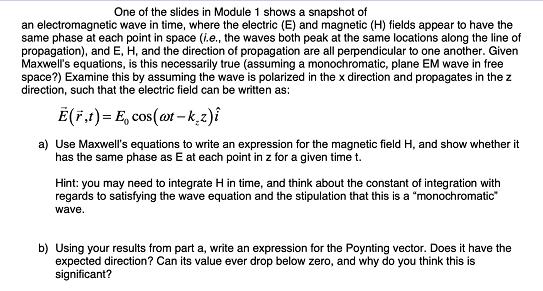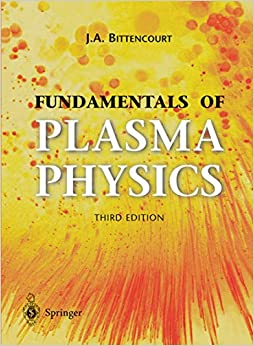Answered step by step
Verified Expert Solution
Question
1 Approved Answer
One of the slides in Module 1 shows a snapshot of an electromagnetic wave in time, where the electric (E) and magnetic (H) fields

One of the slides in Module 1 shows a snapshot of an electromagnetic wave in time, where the electric (E) and magnetic (H) fields appear to have the same phase at each point in space (i.e., the waves both peak at the same locations along the line of propagation), and E, H, and the direction of propagation are all perpendicular to one another. Given Maxwell's equations, is this necessarily true (assuming a monochromatic, plane EM wave in free space?) Examine this by assuming the wave is polarized in the x direction and propagates in the z direction, such that the electric field can be written as: E(F,t)= E cos(at-k.z)i a) Use Maxwell's equations to write an expression for the magnetic field H, and show whether it has the same phase as E at each point in z for a given time t. Hint: you may need to integrate H in time, and think about the constant of integration with regards to satisfying the wave equation and the stipulation that this is a "monochromatic wave. b) Using your results from part a, write an expression for the Poynting vector. Does it have the expected direction? Can its value ever drop below zero, and why do you think this is significant?
Step by Step Solution
There are 3 Steps involved in it
Step: 1
The question is about deriving expressions for the magnetic field and Poynting vector for a monochromatic electromagnetic wave To address this question well use Maxwells equations specifically Faraday...
Get Instant Access to Expert-Tailored Solutions
See step-by-step solutions with expert insights and AI powered tools for academic success
Step: 2

Step: 3

Ace Your Homework with AI
Get the answers you need in no time with our AI-driven, step-by-step assistance
Get Started


